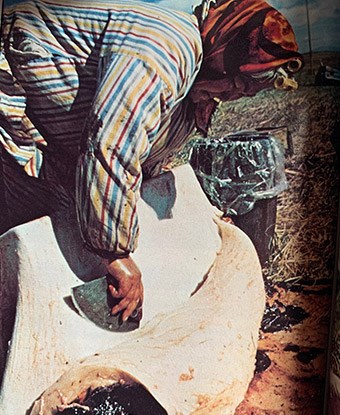
NPS Photo
“For our children and their children, we know how important it is to feed from our land... Our foods define who we are, connect us to the land and keep our culture alive.” – Julia Jones Anausuk Stalker, Kotzebue, Alaska
From time immemorial, the Iñupiat people of Northwest Alaska have relied on the land to sustain them. The rich bounty of the ocean, lagoon and tundra remains an important source of food in Northwest Alaska. Along the coast of Cape Krusenstern National Monument, the Kivalinigmiut, Napaaqtugmiut, Sisualigmiut and QikiqtagruNmiut have carried on for hundreds of generations the tradition of living off the land - hunting for seal and beluga, as well as setting fishnets and collecting berries and eggs.
Because of its central location, settlements at Cape Krusenstern National Monument have long served as an economic and cultural hub for the area. Today many local Inupiaq from Kotzebue and Noatak continue to have summer fish camps along the shore of the Chukchi Sea with subsistence use by local rural residents protected in the Monument.
Read about Carrie Williams Qisiliaq Uhl, who lived and subsisted in the area, and worked hard to pass on traditions to all who had an interest in learning, including teaching skin sewing, seal processing, and cooking.
Watch a video showing how to sew a grass basket, a traditional Inupiaq craft.
Learn more about this ancient landscape and the land of the Iñupiat.
Visit the monument’s website at: Cape Krusenstern National Monument (U.S. National Park Service) (nps.gov)
Last updated: January 17, 2024
